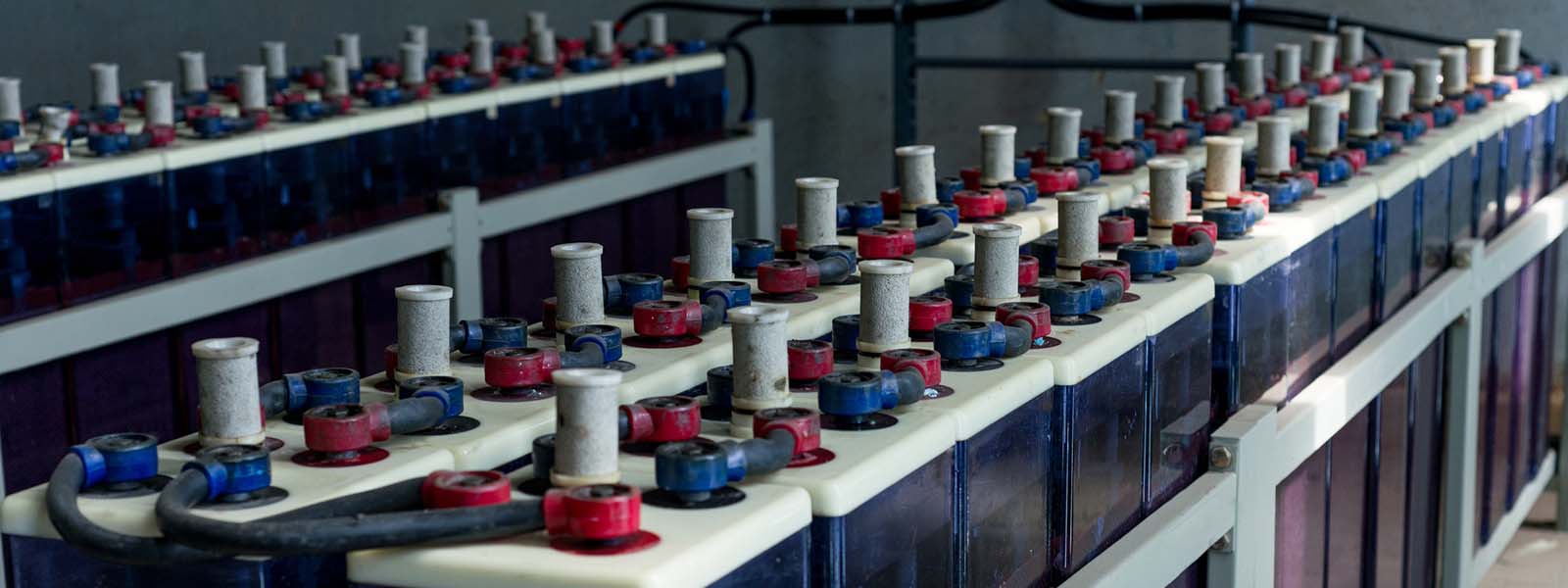
Researchers at the University of Strathclyde have been working with an energy storage company to improve the efficiency of an innovative battery that could offer reliable, low-cost, low carbon power to homes and businesses in sub-Saharan Africa.
The project produced results which could reduce production costs by more than half, and by as much as 70%.
The researchers have been working with Edinburgh-based StorTera on a graphite polysulfide single liquid flow battery. The technology has the potential to support critical infrastructure such as telecommunications towers, facilitating the increased deployment of renewable power sources in the region, and to support the displacement of expensive and polluting fossil fuel-based back up generation.
The collaboration is part of a grant provided to the Faraday Institution from UK Aid as part of its Transforming Energy Access (TEA) Platform. The TEA Platform supports early-stage testing and scale up of innovative technologies and business models that will accelerate access to affordable, clean energy-based services to poor households and enterprises, especially in Africa.
Harsh climates
Liquid flow batteries store energy in the electrolyte instead of at the electrodes. The energy stored by the cell can be increased by adding a larger liquid tank, without a corresponding increase in power. This is a key difference between this technology and other commonly used types of battery, such as lithium-ion, where power input and energy storage grow in tandem. Some flow battery technologies also operate well in widely varying temperatures, making them suitable for use in harsh climates.
This combination of low power, high capacity and long service life means that liquid flow batteries are potentially well suited to powering low-carbon energy grids in emerging economies. However, use of the technology is not without problems, as manufacturing is complex and the materials currently used are expensive.
StorTera has developed a potential solution to the manufacturing issue, with a spiral flow battery that can be manufactured using a roll-to-roll process, leading to increased efficiency, cost savings and a higher production rate.
The company worked with the team at Strathclyde to refine the system design and improve the electrolyte and electrode materials chemistry – including making the liquid component of the battery suitable for Sub-Saharan climates – while reducing costs.
The Electrochemical Engineering group at Strathclyde, led by Dr Edward Brightman, worked closely with StorTera to synthesise and characterise novel electrolyte formulations using lower cost, more sustainable solvents. They also investigated the influence of the graphite current collector and separator types on the cell performance.
Researchers demonstrated a reduced catholyte cost of 50% and reduced production costs of 50-70%, leading to an overall reduction of more than 20% in upfront costs of the system, to £70/kWh, and a 20% increase in durability, albeit at small scales.
Micro grids
StorTera then built a prototype system incorporating Strathclyde’s system improvements, which was tested by PNDC at Strathclyde. The system demonstrated more than 99% round trip efficiency on charging and discharging in a 15W/20Wh configuration. Fortuitously, testing during a UK-wide heatwave in July 2022 enabled the tests to be completed at temperatures comparable to those the flow battery would experience in sub-Saharan Africa.
In parallel, a team from Strathclyde’s Energy for Development group carried out a techno-economic modelling study, surveying stakeholders in Malawi and Zimbabwe about how the technology will be used and their requirements. This found that the liquid flow batteries can achieve cost savings of 20% - 50% over Li-ion and lead acid chemistries when used in micro grids. A scientific paper is being prepared to report the results of the study.
The prototype device developed is small, and the challenge for StorTera is now to demonstrate that the technology works at much larger scales; the aim is to build a 200kW/1.6MWh demonstrator by 2024. The company has subsequently secured £5m of funding from the UK Government’s Net Zero Innovation Portfolio (NZIP), which will support the development of a long-lasting megawatt scale battery that can operate for up to eight hours. The funding will enable the number of company employees to double to 28. The prototype cell performance also requires further improvements to achieve the desired cycle life and power density, which is the focus of ongoing work by StorTera.
For the Strathclyde team, working with StorTera has provided a pathway to take part in follow-on projects, as well as potentially to publish the outcomes of their research. As a result of the project, the University and StorTera have committed to joint funding of a PhD studentship, starting in the autumn of 2023, to build on the team’s work with a more in-depth study of the durability of flow batteries.
Dr Brightman, of Strathclyde’s Department of Chemical & Process Engineering, said: “This was a great opportunity for the Electrochemical Engineering group to work with PNDC and to help StorTera develop their technology. The Faraday Institution were enormously supportive throughout the project and we look forward to continuing our flow battery work with StorTera.”
Pasidu Pallawela, StorTera’s Chief Technology Officer, said: “Using this kind of battery in developing countries, especially sub-Saharan Africa, is very feasible, and could be a cost-effective solution to integrate more renewable energy into the grid. These kinds of technologies will be required all around the world as we move towards net zero.
“Working with the Faraday Institution and the University of Strathclyde has been extremely useful for us. It has given us access to a network of academics who have done a lot of work in this area. Being able to call on their expertise has been invaluable as we look to bring this innovative product to market.”